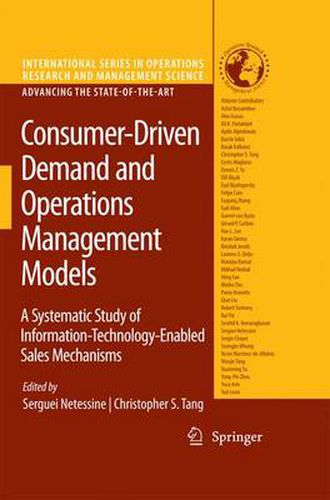Readings Newsletter
Become a Readings Member to make your shopping experience even easier.
Sign in or sign up for free!
You’re not far away from qualifying for FREE standard shipping within Australia
You’ve qualified for FREE standard shipping within Australia
The cart is loading…






This title is printed to order. This book may have been self-published. If so, we cannot guarantee the quality of the content. In the main most books will have gone through the editing process however some may not. We therefore suggest that you be aware of this before ordering this book. If in doubt check either the author or publisher’s details as we are unable to accept any returns unless they are faulty. Please contact us if you have any questions.
To compete in today’s volatile market with rapidly changing consumer tastes and erce competition, companies in the manufacturing and service industries are - ploying new mechanisms to increase sales, market shares, and pro ts. As an - fective mechanism to segment a market comprising of consumers with different needs, preferences, and willingness-to-pay, many rms have used product (or s- vice) variety with different price points to serve different segments of the market, see Ho (1998). Ideally, the price of each of these products (or services) targets a particular segment of customers. For example, airlines often use different terms of sales (refundable/non-refundable, upgradable/non-upgradable, direct/connecting ight, etc. ) to sell economy class tickets at different prices. Likewise, retailers - ten sell the same product at different prices in different channels (company’s own web site, dealers’ web sites, or company’s physical stores) or at different times (- fore, during, and after the selling season), see Talluri and van Ryzin (2005). Ample academic literature in Operations Management and other areas considered these strategies. However, as consumers become more knowledgeable about the product, pricing, organizational and operational policies that the companies deploy for pr- ucts and services, their purchasing begins to change dramatically. In the academic Operations Management literature, consumer demand is often assumedtobe exogenous so that demand functions are usually modeled as well de- ned and exogenously speci ed functions of price and/or other product attributes such as quality.
$9.00 standard shipping within Australia
FREE standard shipping within Australia for orders over $100.00
Express & International shipping calculated at checkout
This title is printed to order. This book may have been self-published. If so, we cannot guarantee the quality of the content. In the main most books will have gone through the editing process however some may not. We therefore suggest that you be aware of this before ordering this book. If in doubt check either the author or publisher’s details as we are unable to accept any returns unless they are faulty. Please contact us if you have any questions.
To compete in today’s volatile market with rapidly changing consumer tastes and erce competition, companies in the manufacturing and service industries are - ploying new mechanisms to increase sales, market shares, and pro ts. As an - fective mechanism to segment a market comprising of consumers with different needs, preferences, and willingness-to-pay, many rms have used product (or s- vice) variety with different price points to serve different segments of the market, see Ho (1998). Ideally, the price of each of these products (or services) targets a particular segment of customers. For example, airlines often use different terms of sales (refundable/non-refundable, upgradable/non-upgradable, direct/connecting ight, etc. ) to sell economy class tickets at different prices. Likewise, retailers - ten sell the same product at different prices in different channels (company’s own web site, dealers’ web sites, or company’s physical stores) or at different times (- fore, during, and after the selling season), see Talluri and van Ryzin (2005). Ample academic literature in Operations Management and other areas considered these strategies. However, as consumers become more knowledgeable about the product, pricing, organizational and operational policies that the companies deploy for pr- ucts and services, their purchasing begins to change dramatically. In the academic Operations Management literature, consumer demand is often assumedtobe exogenous so that demand functions are usually modeled as well de- ned and exogenously speci ed functions of price and/or other product attributes such as quality.